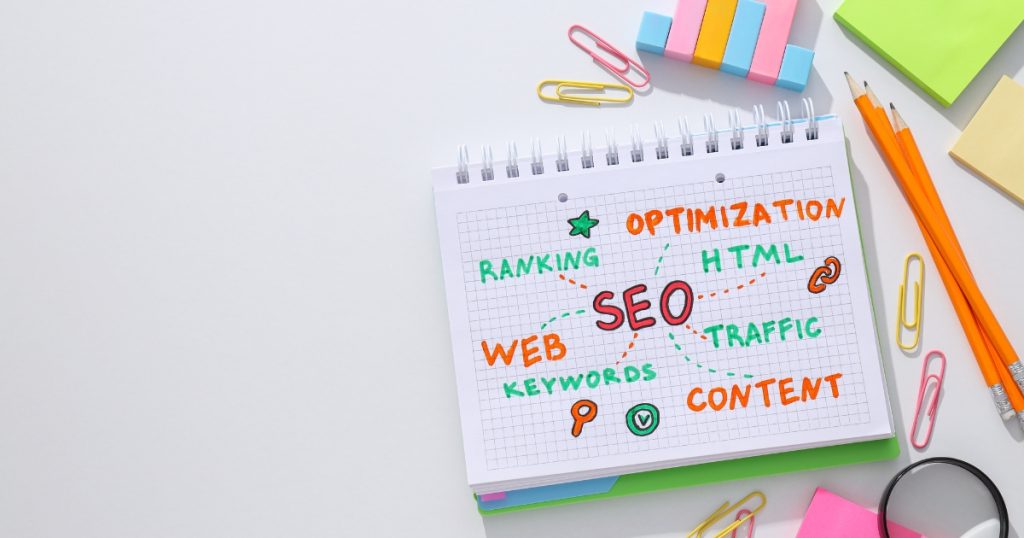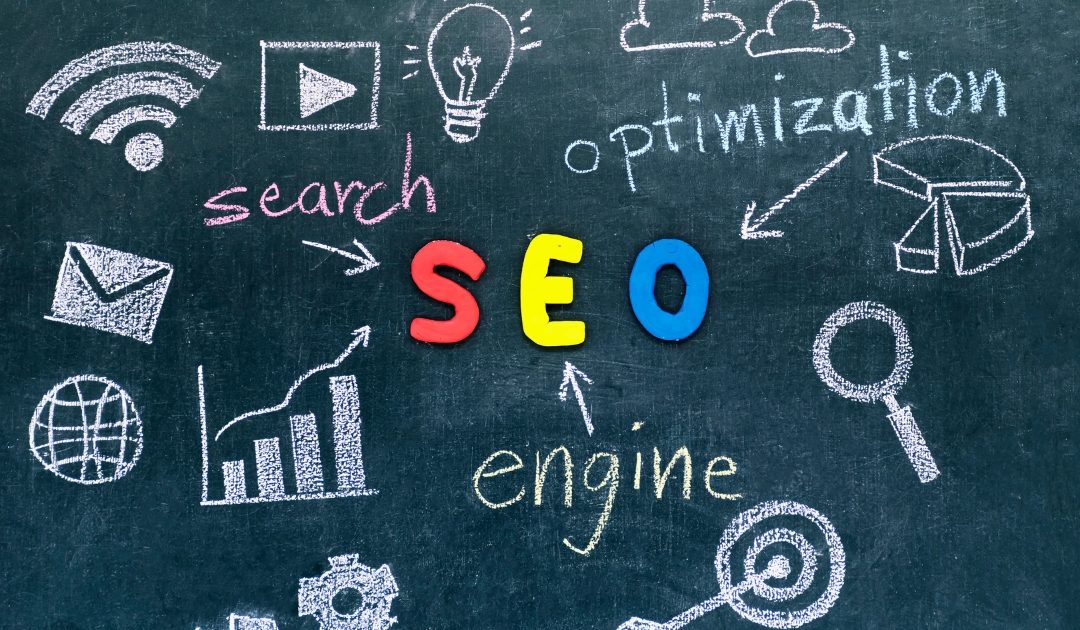Why On Site Search Engine Optimization Is the Game Changer You Need
In a digital world teeming with noise, visibility is everything. On-site search engine optimization isn’t just a technical checklist — it’s a strategic art form. It’s the difference between a buried page and one that commands attention. With algorithm updates arriving faster than ever, mastering your on-site SEO can vault your content from obscurity to page one — and it can happen quicker than you think.

How Google Sees Your Website and Why It Matters
Google’s bots don’t see the lush visuals or clever design you crafted. They see structure, tags, keywords, and content hierarchy. Your site’s HTML tells Google whether you’re a resource worth showcasing or a page to skip. Understanding how search engines crawl and index pages is crucial — it’s how you speak their language.
The Fast Track to SEO Mastery Starts Here
Speed doesn’t mean skipping steps; it means knowing exactly where to focus. With the right elements in place—optimized content, clean code, and intentional keyword strategy—you can accelerate results. This guide is your shortcut to powerful on-site SEO that performs.
Understanding the Core of On-Site SEO
What Is On Site Search Engine Optimization Really About
It’s the practice of tuning every page of your site to communicate effectively with search engines. From title tags to body copy, every element contributes to clarity, relevance, and authority. At its core, it’s about creating pages that both users and bots love.
How On-Site SEO Differs from Off-Site SEO
Off-site SEO focuses on signals from other places — backlinks, social media mentions, and domain authority. On-site SEO is what you directly control: content quality, keyword placement, internal links, and technical health. It’s the internal framework that supports all other SEO efforts.
The Big Picture: Why On-Site SEO Drives Organic Traffic
A well-optimized site becomes magnetic to search engines. Each optimized page acts as a beacon, increasing your chances of being found. More visibility leads to more clicks, more leads, and ultimately, more conversions — all without paying for each visitor.
Getting Technical: Laying the Foundation
The Role of Clean HTML and Fast Page Speed
Messy code is like static in a conversation — it disrupts clarity. Clean HTML improves load times and crawlability. Pair that with fast page speeds, and you give both users and search engines a smoother ride. Google rewards sites that value time.
Mobile Optimization: Don’t Let Your Rankings Slip
Over half of all traffic comes from mobile devices. If your site isn’t mobile-optimized, it’s not just frustrating for users — it’s a red flag for search engines. Responsive design, quick loading, and easy navigation on small screens are essential.
HTTPS and Secure Sites: The Trust Factor Google Loves
Security is non-negotiable. Sites with HTTPS encrypt data and protect users — and Google prioritizes them in search results. An SSL certificate doesn’t just inspire trust; it’s a ranking factor.
Crawlability and Indexability: Speaking Google’s Language
If a search engine can’t crawl your site, it can’t rank it. Make sure your robots.txt isn’t accidentally blocking important pages. Use sitemaps and proper linking, and avoid orphan pages to ensure everything you publish is discoverable.
Keyword Strategy That Works
Finding the Right Keywords for Every Page
Start with intent. What is the user truly searching for? Use tools like Google Keyword Planner, Ahrefs, or SEMrush to discover high-value, relevant keywords. Each page should target one primary keyword and a handful of semantically related phrases.
Using Primary and Secondary Keywords with Purpose
Primary keywords anchor your content; secondary keywords add nuance and depth. Integrate them naturally into titles, headers, and body copy. It’s about relevance, not repetition.
Avoiding Keyword Stuffing: A Balanced Approach
Search engines are wise to keyword stuffing. Overusing terms feels robotic and hurts readability. Aim for natural integration — your content should sound human first and optimized second.
Perfecting On-Page Elements
Crafting Magnetic Title Tags That Boost Clicks
A substantial title tag is both a ranking signal and a user magnet. Keep it under 60 characters, include your primary keyword early, and infuse it with curiosity or urgency to boost click-through rates.
How to Write Meta Descriptions That Convert
Meta descriptions aren’t direct ranking factors, but they influence behaviour. Use 150-160 characters to summarize the page, highlight benefits, and include a compelling call to action.
Heading Tags Done Right: H1, H2, and Beyond
Headings structure your content for both readers and bots. Use H1 for the main title, H2 for core sections, and H3 or lower for subpoints. Logical hierarchy improves comprehension and SEO.
Optimizing URLs for SEO and User Clarity
Keep URLs short, descriptive, and keyword-rich. Avoid unnecessary numbers, dates, or characters. Clean URLs tell both humans and crawlers what to expect.
Internal Linking Strategies to Supercharge Navigation
Intelligent internal linking spreads authority across your site. Link to related content with descriptive anchor text. This improves user flow and helps search engines understand topic clusters.
Content Optimization That Captivates and Converts
Creating SEO-Driven Content That Still Feels Human
Your audience isn’t a machine. Write for people first — inform, entertain, solve problems. Then, go back and layer in SEO essentials. Authenticity and utility always win.
Using Multimedia to Keep Users and Google Engaged
Images, videos, and infographics — these break up text and increase time on the page. Search engines interpret engagement as a quality signal, so enrich your content with visual flair.
Understanding Keyword Density Without Obsessing
There’s no magic number, just a guiding principle: use keywords when it makes sense. Read your content aloud. If it sounds unnatural, revise. Context beats count.
Content Freshness: When and How to Update for SEO
Stale content loses rankings. Periodically review top pages to update statistics, refresh examples, and add new insights. A dynamic site is a healthy site.
User Experience: The Hidden SEO Power Tool
Design and Layout Tips That Reduce Bounce Rate
Cluttered pages repel visitors. Use white space, intuitive navigation, and clear visual hierarchy. A well-organized layout guides readers through content smoothly.
Improving Readability with Structure and Style
Break up text with short paragraphs, bullet points, and subheadings. Use a conversational tone. Readability keeps users engaged — and engagement boosts SEO.
The Power of a Clear Call-to-Action on SEO
A strong CTA directs users to the next step, whether it’s a purchase, signup, or share. It also signals content value and intent, which can support behavioural ranking factors.
Image and Media Optimization Tips
How to Optimize Image File Names and Alt Text
Descriptive file names and alt attributes help search engines understand your images. Use keywords sparingly and accurately, improving both SEO and accessibility.
Compressing Images Without Losing Quality
Large images have slow load times. Use tools like TinyPNG or WebP formats to reduce file size while maintaining clarity. Speed is critical to performance.
Video Embeds and SEO: What You Need to Know
Embedding videos can increase time on site and provide additional value. Use schema markup and descriptive metadata to help search engines contextualize video content.
Advanced Techniques for SEO Pros
Schema Markup: Helping Search Engines Understand Content
Schema markup is a type of structured data added to your website’s code that helps search engines better interpret and display your content. Think of it as a way to give search engines more context about what your pages are really about.
Common Types of Schema Markup:
- Articles
- Products
- Reviews
- Events
- FAQs
- Local Business Information
- Recipes

How to Implement Schema Markup:
- Choose the relevant schema type for your content.
- Use tools like Google’s Structured Data Markup Helper to generate the code.
- Add the schema code to your site’s HTML or via CMS plugins.
- Test your markup using Google’s Rich Results Test tool.
Using schema markup is a powerful way to improve your SEO by making your content more understandable and attractive in search engine results.
Structured data gives context to your content—product information, reviews, and events. Implementing schema can lead to rich results, enhancing visibility and click-through rates.
Canonical Tags: Preventing Duplicate Content Issues
Duplicate content can confuse search engines, diluting your site’s ranking power and causing indexing problems. One of the best ways to avoid this is by using canonical tags.
What is a Canonical Tag?
A canonical tag (rel= “canonical”) is an HTML element that tells search engines which version of a page is the “master” or preferred URL when multiple pages have similar or duplicate content.
Why Are Canonical Tags Important?
- They consolidate ranking signals to a single URL, preventing your SEO value from being split.
- They help avoid penalties or ranking drops caused by duplicate content.
- They guide search engines to index the correct page, improving crawl efficiency.
How to Use Canonical Tags Effectively:
- Identify Duplicate or Similar Pages
- Examples include printer-friendly versions, tracking parameters, or session IDs, which create multiple URLs for duplicate content.
- Add a Canonical Tag to the Duplicate Pages
- Point them to the preferred “canonical” URL. This signals to search engines which page to prioritize.
- Ensure Consistency Across Your Site
- Use canonical tags consistently on all duplicates, and avoid self-referencing canonical errors.
- Test and Monitor
- Use tools like Google Search Console and URL inspection to verify your canonical tags are working as intended.
By implementing canonical tags correctly, you protect your site from duplicate content issues and strengthen your SEO foundation.
Canonical tags tell search engines which version of a page is the original. This avoids the dilution of ranking signals and ensures proper indexation.
Using Analytics to Refine Your On-Site SEO Strategy
Data is your best ally when it comes to optimizing your website for search engines and users alike.
How to Use Analytics Effectively:
- Track User Behavior
- Tools like Google Analytics show how visitors interact with your site—the pages they visit, the time spent, bounce rates, and exit points. Identify which pages engage users and which need improvement.
- Understand which keywords and landing pages drive the most organic visitors, and focus optimization efforts on high-potential keywords and content.
- Analyze Conversion Data
- Set up goals to track actions such as newsletter signups, purchases, or contact form submissions. Optimize pages that have high traffic but low conversions.
- Evaluate Page Load Times
- Slow pages lose visitors and rankings. Use analytics in combination with tools like PageSpeed Insights to pinpoint and fix speed bottlenecks.
- Assess Mobile Performance
- Check analytics for device breakdowns and mobile bounce rates. Improve mobile usability to capture and retain mobile search traffic.
- Identify Content Gaps and Opportunities
- Look for keywords driving impressions but not clicks. Revise meta titles and descriptions or enhance content relevance to improve CTR.
- Measure Internal Linking Impact
- Analyze how visitors navigate through your site. Strengthen internal links to boost SEO juice flow and improve user pathways.
Regularly reviewing and interpreting these analytics insights empowers you to refine your on-site SEO strategy continuously, leading to better rankings, traffic, and conversions.
Google Analytics and Search Console offer vital insights. Monitor bounce rates, time on page, and keyword performance to refine content and improve results over time.
Common Pitfalls to Avoid
The Most Overlooked On-Site SEO Mistakes
Even seasoned marketers can slip up on on-site SEO if they aren’t careful. These overlooked errors can quietly drag down your rankings and traffic if left unaddressed:
- Missing or Duplicate Title Tags
- Each page needs a unique, descriptive title tag. Duplicate or missing titles confuse search engines and reduce click-through rates.
- Ignoring Meta Descriptions
- Though meta descriptions don’t directly impact rankings, they influence CTR. Skipping or duplicating them is a missed opportunity.
- Poor URL Structure
- URLs that are overly long, messy, or filled with unnecessary parameters hurt usability and SEO clarity.
- Unoptimized Images
- Large, uncompressed images slow down your site. Missing alt text also means missed SEO and accessibility benefits.
- Thin or Duplicate Content
- Pages with little or copied content fail to provide value and can be penalized by search engines.
- Neglecting Internal Linking
- Without a thoughtful internal linking strategy, important pages may remain hidden from crawlers and users.
- Ignoring Mobile Usability
- Mobile-unfriendly sites lose traffic and rankings as search engines prioritize mobile-first indexing.
- Slow Page Load Times
- Even a few seconds of delay can increase bounce rates and reduce rankings.

By identifying and fixing these common mistakes, you create a stronger foundation for your SEO efforts and improve both user experience and search engine trust.
Neglected meta tags, duplicate content, and ignored alt text are common oversights that can sabotage performance. Small fixes often yield big gains.
How to Fix Broken Links That Hurt SEO
Broken links can frustrate users and harm your search rankings by signalling poor site maintenance.
Steps to Identify and Fix Broken Links:
- Find Broken Links
- Use tools like Screaming Frog SEO Spider, Google Search Console, or Ahrefs Site Audit to scan your website and detect broken internal and external links.
- Assess the Broken Links
- Determine if the broken link points to a page that no longer exists or was moved. For internal links, check if the destination URL can be updated or redirected.
- Fix or Remove
- Update the URL if the page has moved or changed location.
- Set up a 301 Redirect from the broken URL to a relevant live page to preserve SEO value.
- Remove the Link entirely if the destination content is gone and no alternative exists.
- Test Your Fixes
- After making changes, re-crawl your site with your tool of choice to confirm that broken links are resolved.
- Regular Monitoring
- Schedule regular link audits to catch and fix broken links proactively before they impact SEO.
Fixing broken links not only helps retain your site’s authority but also delivers a better user experience—both critical for SEO success.
Broken internal or outbound links disrupt user experience and harm SEO. Regularly scan your site with tools like Screaming Frog and redirect or update outdated links.
Avoiding Thin Content That Pulls You Down
Pages with little substance can drag down domain authority. Ensure each page offers unique, meaningful value to its target audience.
Putting It All Together
A Simple On-Site SEO Checklist You Can Use Today
✓ Keyword-optimized title and meta
✓ Clean URLs and headers
✓ Quality content with relevant media
✓ Fast, mobile-friendly design
✓ Internal links and schema markup
✓ Secure, crawlable site structure
Tools That Make On-Site Optimization Fast and Easy
Optimizing your website can be complex—but the right tools make the process faster, easier, and more effective. Here are some top picks to help you nail on-site SEO essentials without the hassle:
- Google Search Console
- Screaming Frog SEO Spider
- Yoast SEO (for WordPress)
- PageSpeed Insights
- Ahrefs Site Audit
- GTmetrix
- Deep dive into site speed and performance metrics with detailed reports and improvement suggestions.

Using these tools regularly helps you stay on top of your on-site SEO game, making optimization fast, efficient, and impactful.
Use Yoast for real-time feedback, Screaming Frog for audits, and Google Search Console for performance monitoring. These tools reduce guesswork and accelerate progress.
Monitoring Your Progress: What Metrics Matter Most
- Organic Traffic
- Keyword Rankings
- Track how your target keywords perform over time in search results. Rising rankings mean better relevance and authority.
- Click-Through Rate (CTR)
- The percentage of users who click your Link after seeing it in search results. A high CTR suggests your titles and descriptions are compelling.
- Bounce Rate & Dwell Time
- How long do visitors stay and engage with your content? Low bounce rates and longer dwell times show your content matches user intent.
- Conversion Rate
- Ultimately, the goal is to convert visitors into customers or leads. Track how many complete desired actions.
Your Path to SEO Mastery Starts with On-Site Essentials
Unlocking the full power of SEO begins right on your website. Before chasing backlinks or social signals, your foundation must be rock solid. On site SEO essentials ensure that search engines understand your content and that users have a seamless experience.
Key on-site elements include:
- Optimized Title Tags & Meta Descriptions — Craft clear, keyword-rich titles and summaries that attract clicks.
- Clean URL Structure — Make your URLs descriptive and easy to read for both users and search engines.
- Mobile-Friendly Design — With more searches on mobile than ever, responsive design is non-negotiable.
- Fast Loading Speed — A swift site keeps visitors engaged and boosts rankings.
- Structured Data & Internal Linking — Help search engines crawl and index your pages effectively while guiding visitors deeper into your content.
Mastering these essentials is the first step to climbing SERPs and driving sustainable organic traffic. Ready to build your SEO foundation? Let’s dive in!
You don’t need months to see results. By mastering on site SEO, you control the core of your digital presence. Each tweak brings you closer to higher visibility, more substantial traffic, and meaningful conversions.

